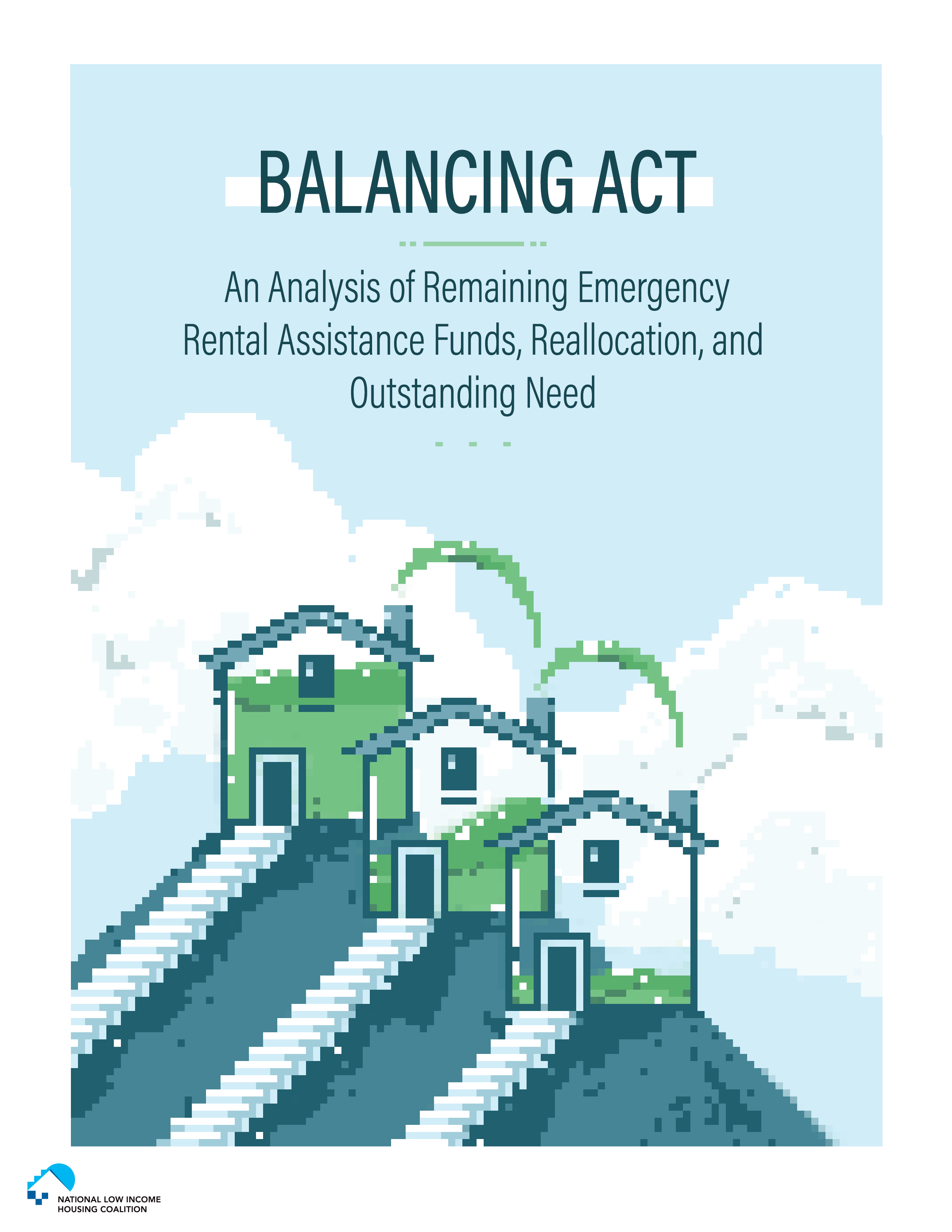New Report Analyzes Remaining ERA Funds, Reallocation, and Outstanding Need
May 26, 2022
NLIHC released today a new report, Balancing Act: An Analysis of Remaining Emergency Rental Assistance Funds, Reallocation, and Outstanding Need. The report summarizes emergency rental assistance (ERA) spending trends, projects when state and large local grantees may exhaust their ERA1 and ERA2 funds, and estimates the amount of funding the U.S. Department of the Treasury (Treasury) could reallocate from slow-spending to fast-spending grantees.
The report finds that during the remainder of 2022, state grantees will begin to exhaust their ERA funds despite continuing need among renters. Key findings include the following:
- Twenty-two state grantees and the District of Columbia will expend their ERA1 funds by the end of May 2022, if current spending patterns continue and grantees do not receive additional reallocated funds. By December 2022, the number of state grantees that will have exhausted their ERA1 and ERA2 funds will increase to 23. Conversely, three state grantees could have ERA2 funds remaining at the time of the statutory deadline of September 2025, if current spending patterns continue and no reallocations occur.
- In 22 of the 40 states with local grantees, the local grantee will exhaust its direct ERA allocation before the state grantee. This situation could leave eligible households in some jurisdictions with few options for assistance, particularly if a state grantee does not serve jurisdictions that received a direct allocation.
- Data from the U.S. Census Bureau’s Household Pulse Survey indicate there are significant differences between states in terms of ERA funds per renter household behind on rent. As of March 2022, the amount of ERA funds remaining per renter household behind on rent ranged from $1,372 in New York to nearly $39,800 in Vermont. The significance of this disparity increases when one considers the relatively lower cost of housing in states like Vermont compared to states like New York.
- Treasury is limiting the power of the ERA2 reallocation process to address disparities in need by prohibiting grantees from voluntarily reallocating more than 60% of their ERA2 allocations. In effect, this prohibition ensures that each grantee will have at least 40% of its ERA2 allocation for use until 2025 – much longer than was intended by the program. Nine state grantees could serve 100% of renter households behind on rent with less than 40% of their ERA2 allocations.
Initial data suggest that reallocation cannot fully address the disparities between grantees’ remaining ERA funds and their outstanding need for assistance. Moreover, while ERA assistance has been critical for millions of households, the program was designed to provide short-term assistance during the pandemic and not to address long-term housing needs. Congress should draw on lessons learned through the implementation of ERA to authorize and fund a permanent program to support households experiencing financial shocks, such as the program envisioned in the “Eviction Crisis Act” co-sponsored by Senators Michael Bennet (D-CO) and Rob Portman (R-OH).
To learn more, read the report at: https://bit.ly/3m4CSRD
